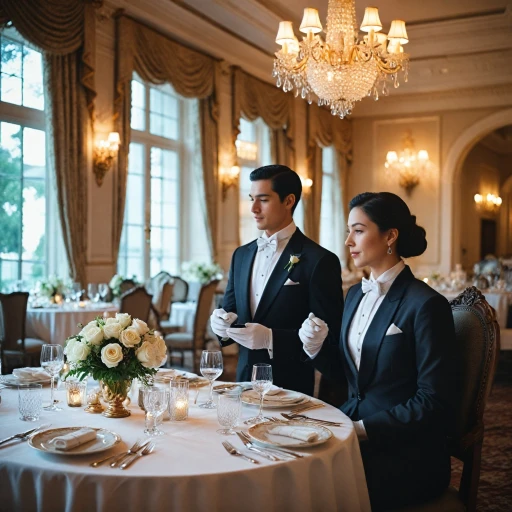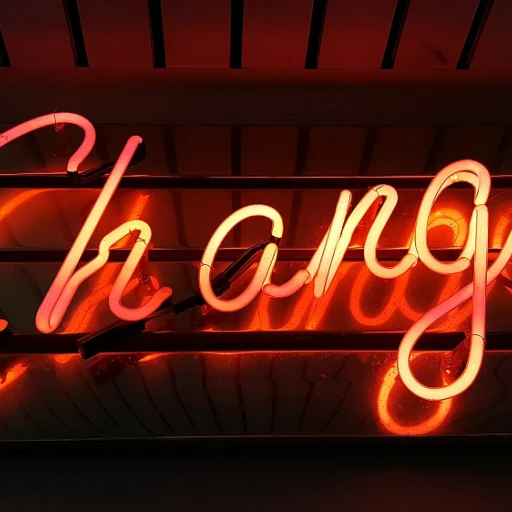
Understanding the Evolving Landscape of Luxury Retail
A New Era in the Luxurious Shopping Experience
The luxury retail scene has seen remarkable shifts, making it crucial for brands to adapt swiftly. The digital boom has introduced fresh opportunities, pushing luxury labels to redefine how they connect with consumers. Global luxury continues to capture attention, but there's an undeniable evolution in consumer needs and expectations. Luxury brands such as Louis Vuitton, iconic for their high-end appeal, now find themselves competing not only with each other but with changing consumer demands. Fashion lovers, especially luxury shoppers, no longer chase after status symbols alone; they seek meaningful experiences that tell a story and offer a connection. While bespoke real estate and flagship physical stores remain vital, today's market favors those that integrate online conveniences seamlessly into their service. Recent retail trends indicate a broader acceptance of social media as a vital tool for communication and community. The power of Instagram and TikTok in shaping brand perception can't be ignored. Thus, for luxury retailers aiming to engage their audience, crafting a brand voice that resonates across platforms is indispensable. The real hallmark of success in the luxury market lies in understanding the modern consumer. With access to a global shopping spree from their phone screens, consumers are more informed, making them choosier with their spending. It's not just about the allure of luxury goods but an overall captivating experience. Retailers must ensure unparalleled customer service while fostering an environment where consumers feel special and valued. Despite a volatile market landscape, there are silver linings. Embracing these new retail dynamics allows brands to stand as frontrunners, leading the luxury wave with both tradition and innovation. As we dissect further in the source understanding the evolving roles, leadership becomes key in navigating these currents and steering towards sustainable success. By synthesizing the quintessential glamour of luxury with today's digital flair, brands can not only survive but thrive. Keeping pace with shopping transformations means more than just staying afloat—it paves the path to becoming a top luxury brand in this new age.Innovation as a Key Driver
Driving Change through Innovation
Innovation stands as a game-changer for luxury brands aiming to stay ahead of the curve. Consumers constantly seek new experiences and products that resonate with their lifestyle and aspirations. Leading luxury brands, like Louis Vuitton, are setting trends by investing in cutting-edge technology to enhance their offerings and captivate luxury shoppers. In the global luxury market, brands embracing technological advancements such as augmented reality, virtual consultations, and AI-driven personalization are winning favor with top luxury consumers. Notably, global luxury giants are leveraging these tools to create memorable shopping experiences, both online and in physical stores, ensuring their stay at the forefront of the industry. Consider implementing innovative technologies that align with your brand’s ethos and customer expectations. Doing so enhances your market appeal and positions your business as a forward-thinking luxury contender.Crafting Memorable Customer Experiences
Nothing captures the heart of a consumer more than exceptional luxury shopping experiences. It's not just about the products; it’s the emotional connection and memorable interactions that build loyalty. Top luxury brands know this and invest heavily in customer experience training and bespoke luxury retail environments. Luxury consumers expect unparalleled customer service, and successful brands deliver through personalized experiences in-store and online. Tailored services, such as exclusive product previews and personalized consultations, make each customer feel valued and understood. Digital strategies also play a crucial role by enhancing how brands interact with their audience. Harnessing social media effectively can boost customer engagement and gather valuable insights that refine offerings to align with trending desires. For more insights and a deep dive into the heartbeat of business leadership in crafting these experiences, consider exploring this resource.Enhancing Customer Experience
Crafting Unforgettable Shopping Moments
In the luxury retail market, it's not just about selling products; it's about crafting experiences that leave a lasting impression. Luxury brands like Louis Vuitton and Vacheron Constantin have mastered the art of creating an environment where customers feel special and valued. This goes beyond the allure of high-end products to the very heart of what makes luxury shopping an emotional journey.
To truly connect with luxury consumers, brands must focus on the customer experience. This means understanding the preferences and expectations of luxury shoppers who are often looking for personalized services and exclusive access. It's about creating a sense of belonging and exclusivity, which can be achieved through personalized shopping experiences, private viewings, and bespoke services.
The Role of Technology in Enhancing Customer Connections
Technology plays a pivotal role in shaping the luxury shopping experience. With the rise of digital platforms, luxury brands have the opportunity to connect with their customers on a global scale. Whether through virtual reality tours of their flagship stores or personalized online shopping assistants, technology can enhance the way customers interact with brands.
Luxury retailers are increasingly using data analytics to gain insights into customer behavior and preferences. This allows them to tailor their offerings and create targeted marketing campaigns that resonate with their audience. By leveraging data, brands can anticipate trends and offer products that align with the desires of their customers, ultimately driving sales and strengthening brand loyalty.
Creating Spaces That Speak to the Heart
The physical store remains a vital touchpoint in the luxury retail industry. While online shopping continues to grow, the allure of a beautifully designed store cannot be underestimated. Luxury brands invest heavily in real estate to create spaces that reflect their brand image and offer an immersive experience. These stores are not just places to shop; they are destinations that draw customers in and invite them to linger.
Luxury retailers must focus on creating environments that are not only visually stunning but also offer a seamless shopping experience. From the layout and design to the customer service, every aspect of the store should be meticulously planned to ensure that it aligns with the brand's ethos and appeals to the discerning tastes of luxury shoppers.
By focusing on these elements, luxury brands can enhance their customer experience and solidify their position in the competitive luxury market. For more insights on how to succeed in this space, explore our article on mastering C-suite leadership strategies for success.
Sustainability and Ethical Practices
Prioritizing Ethical Practices in Luxury Retail
The luxury retail industry is increasingly spotlighting sustainability and ethical practices. This shift is not just a passing trend but a fundamental change in how luxury brands operate. Luxury consumers are more informed and discerning, seeking brands that align with their values. For instance, Louis Vuitton and Vacheron Constantin are setting examples by integrating sustainable practices into their operations, from sourcing materials to manufacturing processes.
Adopting sustainable practices can boost a brand's image and attract a new wave of luxury shoppers who prioritize ethical consumption. The retail industry is seeing a rise in demand for transparency, and brands that can demonstrate genuine commitment to ethical practices are gaining a competitive edge. This commitment extends beyond products to include ethical labor practices and environmentally friendly store designs.
Aligning Brand Values with Consumer Expectations
Luxury brands must ensure that their values resonate with those of their customers. This alignment can lead to increased customer loyalty and long-term sales growth. For example, the global luxury market is witnessing a surge in demand for second-hand luxury goods, driven by a desire for sustainability. Brands that embrace this trend can tap into a growing segment of eco-conscious consumers.
Moreover, the integration of sustainable practices into the luxury shopping experience can enhance customer experiences. By creating stores that reflect a commitment to sustainability, luxury retailers can offer an immersive experience that goes beyond mere transactions. This approach not only appeals to high-end shoppers but also sets a standard for the industry.
Building Trust Through Transparency
Transparency is a key factor in building trust with luxury consumers. Brands that openly communicate their sustainability efforts and ethical practices can foster a strong connection with their audience. This transparency can be a powerful tool in differentiating a brand in a crowded market.
In conclusion, the luxury industry is at a pivotal moment where sustainability and ethics are becoming integral to success. Brands that prioritize these values are not only enhancing their image but also securing a loyal customer base. As retail trends continue to evolve, the importance of sustainability in luxury fashion cannot be overstated.
Leveraging Data and Analytics
Using Insights to Shape Luxury Brands
In the competitive luxury market, understanding trends isn't just a starting point; it's a necessity for sustained success. Data isn't just numbers and charts; it's the heartbeat of luxury brands wanting to stay ahead. Today, brands must leverage data and analytics to craft strategies that align with customer demands.
Imagine Louis Vuitton or any top luxury names using insights from data to enhance customer experiences. By effectively analyzing shopping patterns, fashion trends, and consumer preferences, brands can tailor their business models and experiences in ways that resonate more deeply with luxury consumers. This proactive approach not only ensures relevance but keeps luxury brands at the forefront.
Insights Lead to Savvy Placement
Know where your shoppers are. For luxury retailers building their real estate strategy, data-driven insights guide decision-making on the location of physical stores. Global luxury shoppers value both tradition and modern convenience, making strategically placed stores vital. A keen understanding of each market’s specific trends helps luxury retailers decide where new stores should open or existing ones should close to enhance profitability.
Optimizing Brand Presence
Data also enhances brands' understanding of where and how to engage customers. Social media trends luxury brands need to tap into are often guided by data, offering a conversational platform that speaks directly to consumer enthusiasm. Real-time feedback from these digital interactions helps brands remain agile, adjusting campaigns as customers' interests shift.
The power of actionable data in luxury retail is immense. When effectively used, it becomes the tool that luxury brands wield to navigate change. In doing so, they not only meet consumer expectations but set themselves up for long-term success in the luxury retail sector.
Building Resilience and Agility
Staying Ahead with Resilience and Agility
In the luxury retail market, staying nimble and adaptable is not just an option; it's a necessity. The past few years have shown us that the ability to pivot quickly can mean the difference between thriving and merely surviving. As luxury brands like Louis Vuitton and Vacheron Constantin have demonstrated, resilience is built on a foundation of preparedness and flexibility.
Luxury retailers must remain vigilant, always ready to respond to shifts in global trends and consumer behaviors. This means having a keen eye on the retail trends that shape the industry, from the rise of second-hand luxury goods to the increasing demand for sustainable and ethical practices. By anticipating these changes, brands can position themselves as leaders rather than followers.
Investing in People and Technology
Building resilience also involves investing in the right people and technology. Luxury brands need teams that are not only skilled but also passionate about the brand's mission. Employees who understand the nuances of the luxury market can deliver experiences that resonate with luxury shoppers, fostering long-term loyalty.
On the technological front, leveraging data and analytics is crucial. By analyzing customer data, brands can gain insights into consumer preferences and tailor their offerings accordingly. This data-driven approach helps in making informed decisions that align with market demands, ultimately boosting sales and enhancing customer experience.
Real Estate and Store Experience
In the luxury retail industry, the physical store experience remains a vital component of brand strategy. High-end stores are not just places to shop; they are immersive environments that reflect the brand's identity. Investing in prime real estate locations can enhance a brand's image and attract luxury consumers seeking unique shopping experiences.
Luxury brands must ensure that their stores offer more than just products; they should provide memorable experiences that leave a lasting impression. This involves everything from the store's design and layout to the personalized service offered by staff. By creating an inviting and exclusive atmosphere, brands can strengthen their connection with customers.
Looking Forward
As the luxury industry continues to evolve, brands must remain proactive in their strategies. By embracing resilience and agility, luxury retailers can navigate the challenges of the market and seize opportunities for growth. The key is to stay informed, adaptable, and committed to delivering exceptional experiences that resonate with luxury consumers worldwide.






-large-teaser.webp)







